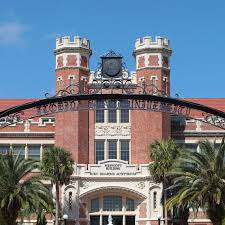Speaker
Description
Study of the QCD phase diagram is important for understanding the physics of the early universe and the interiors of high-density stars. Recently, experiments such as RHIC or GSI have been conducted to explore a wide range of the phase diagram including the QCD critical point. From theoretical analyses, there are many previous studies using lattice QCD or effective models. However, the full picture of the QCD phase diagram has not yet been clarified. Since quantum fluctuations have a large influence on a system behavior near the QCD critical point, one should use a method to take quantum fluctuations into account, when analyzing the entire phase diagram.
We use the Functional Renormalization Group method (FRG) to analyze the chiral phase transition in terms of the 2-flavor Quark-Meson model. The FRG allows us to include effects of quantum fluctuations in a systematic non-perturbative way. However, because of its non- perturbative effects, the FRG equation is not a closed form. Therefore, the Local Potential Approximation (LPA) is often used as the simplest truncation scheme. The LPA has been suggested to give reasonable results for chiral phase transitions at finite temperature in ref. [1][2]. We consider the scale dependence of the effective potential for the meson field φ, the Yukawa interaction coupling g, the quark and meson wave function renormalizations Zq, Zφ. To solve the flow equation numerically in ref. [1][2], the effective potential U(φ) is assumed to be given a finite Taylor series about scale independent expansion points. However, use of this method is questionable for the study of the first-order phase transition at low temperature and high density, accompanied with a discontinuous change of the chiral order parameter. In our study, we use the grid method to solve the flow equation, in which the field φ is the discretized in a one-dimensional grid. This enables us to access the full φ dependence of the effective potential and to describe the first-order phase transition. As a result, we obtain numerical results for the scale dependence of the chiral order parameter, Z φ, and Zq at zero temperature, which agree with those of [3]. The resulting phase diagram at finite temperature is also consistent with the previous work [1][2]. We further discuss the phase diagram at high density, where the first order chiral phase transition is thought to occur.
[1] Jan. M. Pawlowski and F. Rennecke, “Higher order quark-mesonic scattering processes and the phase structure of QCD”, Phys. Rev. D 96, 076002 (2014)
[2] F. Rennecke and B. -J. Schaefer, “Fluctuation-induced modifications of the chiral phase structure in (2+1)-flavor QCD”, Phys. Rev. D 96, 016009 (2017)
[3] Jü rgen Eser, et al. “Low-energy limit of the O(4) quark-meson model from the functional renormalization group approach”, Phys. Rev. D 98, 014024 (2018)
| speaker affiliation | Tokyo University of Science, graduate school of science |
|---|

